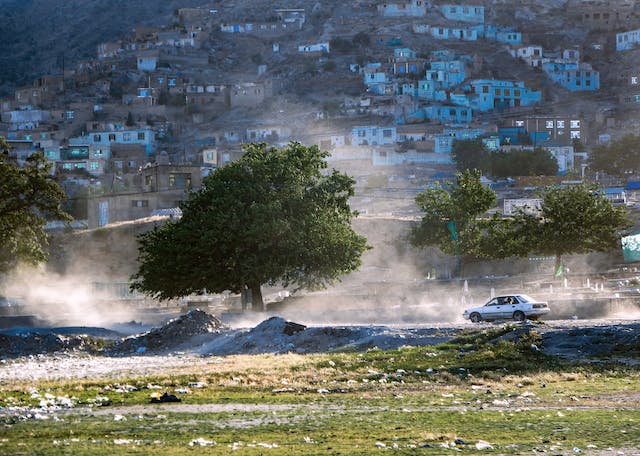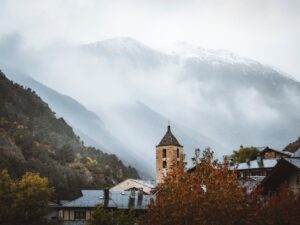1. The Central Asian nation of Afghanistan is landlocked.
The Central Asian nation of Afghanistan is landlocked. Tajikistan to the north-east, Turkmenistan to the north-west, Uzbekistan to the north, Pakistan to the east and south, and Iran to the west are its neighbors. With the Hindu Kush mountain range slicing across its middle, Afghanistan is a mountainous nation. Nowshak is 7,492 meters (24,576 feet) tall, the highest point in Afghanistan.
The history and culture of Afghanistan are extremely rich. Over 50,000 years is thought to be the duration of human habitation in Afghanistan. Over the ages, numerous empires have controlled the nation, including the Timurid, Ghaznavid, Kushan, Achaemenid, and Mughal.
The ethnic groups of Pashtuns, Tajiks, Hazaras, Uzbeks, and Turkmens are among the numerous that make up the diverse nation of Afghanistan. Afghanistan has Dari and Pashto as its official languages. Around 85% of Afghans identify as Sunni Muslims and 15% as Shia Muslims, making up the majority of the population.
With a GDP per person of $510, Afghanistan is a poor nation. Agriculture is the backbone of the Afghan economy, and for many Afghans, growing poppies is a significant source of income. Natural gas, copper, gold, and lithium are among the abundant mineral resources found in Afghanistan.
2. With more than 38 million citizens, Afghanistan is among the most populous nations in the world.
With a population above 38 million, Afghanistan is among the most populous countries globally. Less than 20% of Afghans reside in cities; the bulk of people are rural residents. With a population of more than 4 million, Kabul is the largest city in Afghanistan.
Over 60% of people in Afghanistan are under 25 years old, making it a youthful nation. With 4.9 children born on average per woman, the nation has a high birth rate. Afghanistan has an incredibly high infant mortality rate—60.9 fatalities for every 1,000 live births.
Men hold greater control and power than women in Afghanistan’s patriarchal society. Afghanistan’s women are frequently excluded from both the workforce and educational opportunities. In addition, they experience various sorts of violence and forced marriages.
3. Wars and bloodshed have long plagued Afghanistan.
The history of violence and battle in Afghanistan is lengthy. Through the ages, the nation has experienced multiple invasions by various empires and multiple civil wars. America’s invasion of Afghanistan in the wake of the September 11 terrorist attacks marked the start of the most recent conflict in the nation’s history.
Afghanistan is suffering greatly as a result of the conflict. A large portion of the nation’s infrastructure has been destroyed, over 150,000 people have died, and millions more have been forced to flee. Millions of Afghans are living in poverty and starvation as a result of the war’s humanitarian implications.
It is uncertain when the conflict in Afghanistan will end; it is currently raging. Most of the country is currently under the leadership of the Taliban, a radical Islamic group. Although they are still there, American and other foreign forces are progressively leaving Afghanistan.
4. The cultural and historical legacy of Afghanistan is extensive.
The cultural and historical legacy of Afghanistan is extensive. Art, music, and literature have a long history in the nation. Several UNESCO World Heritage Sites can be found in Afghanistan, such as the Band-e Amir lakes, the Bamiyan Buddha statues, and the Minaret of Jam.
Hospitality is a fundamental component of Afghan culture. Warmth and hospitality are attributes associated with Afghans. They constantly enjoy showing visitors around their houses and food.
Families have a significant role in Afghan culture. Afghans cherish their families dearly and frequently reside in multigenerational extended families. Afghans place a high value on respect for seniors.
5. There are numerous different ethnic groups in Afghanistan.
The history and culture of Afghanistan are extremely rich. There have been numerous empires in charge of the country throughout history. Numerous ethnic groups can be found in Afghanistan, including Arabs, Turkmen, Baloch, Sindhi, Kyrgyz, Tajiks, Hazaras, Uzbeks, and Aimaqs.
Almost all Afghans are native speakers of either Pashto or Dari. The Pashtuns, who comprise the majority ethnic group in Afghanistan, speak Pashto as their language. Most Pashtuns speak Dari, which is the language of the Tajik people.
Among Afghanistan’s ethnic groups, the Hazara people are the third largest. Speaking Hazaragi, a dialect of Persian, they are an ethnic Shia Muslim sect. Among Afghanistan’s ethnic groups, Uzbeks make up the fourth largest group. They reside in the country’s north and speak a Turkic language.
The ethnic group descended from the Mongols is called the Aimaq people. North-west Afghanistan is where they call home. Living close to Turkmenistan’s border in northern Afghanistan are Turkmen. South-west Afghanistan, near the Pakistani border, is home to the Baloch people. South of Afghanistan, near the Iranian border, is home to the Sindhi people. In northeastern Afghanistan, close to Tajikistan’s border, dwell the Kyrgyz people. Eastern Afghanistan, close to Pakistan’s border, is home to Nuristanis. The north of Afghanistan has cities like Mazar-i-Sharif, where Arabs reside.
A major influence on Afghanistan’s history and culture has come from the ethnic diversity of the nation. Competitors for resources and power among the many ethnic groups have been common. As a result, Afghanistan is now unstable and in strife.
Although it presents difficulties, Afghanistan’s ethnic variety may also work to its advantage. To create a nation that is both affluent and peaceful, the various ethnic groups can cooperate and learn from one another.
6. The history of ancient civilizations in Afghanistan is extensive.
The ancient civilizations of Afghanistan have a vast history. Many ancient cities, notably Ghazni, Bamiyan, and Balkh, have left behind their ruins in this country.
In the world, Balkh is among the oldest cities. Around the year 500 BC, the Achaemenids established it. Notable for its silk and carpet production, Balkh was a major commerce hub.
An additional old city in Afghanistan is Bamiyan. In 2001, the Taliban demolished two enormous Buddha sculptures that were located in the city. The sculptures and paintings of Bamiyan were equally well known.
In the sixth century AD, the historic city of Ghazni was established. Among the most potent empires in the Islamic world, the Ghaznavid Empire had its capital city at Ghazni.
Afghanistan has a rich past, which is attested to by the remains of these old cities. Important details about the lifestyles of those who inhabited the area centuries ago are also revealed by them.





